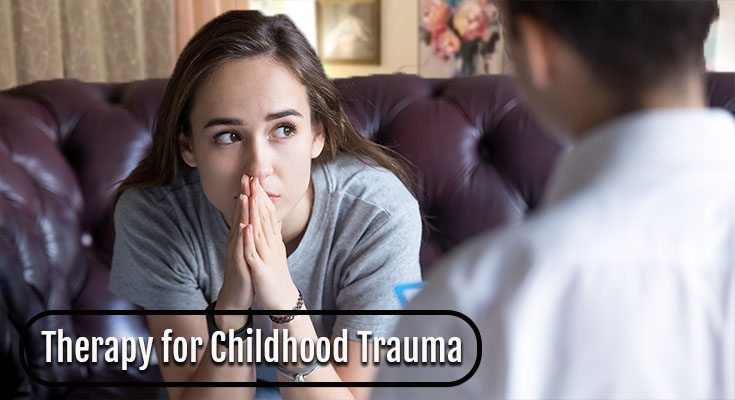Childhood trauma can cast a long shadow over an individual’s life, impacting emotional, psychological, and even physical well-being. Fortunately, therapy for childhood trauma offers a crucial pathway toward healing and recovery from these deep-seated wounds. Guided by skilled therapists, individuals can confront, process, and ultimately transform their traumatic experiences, fostering resilience and reclaiming a sense of agency over their lives.
Childhood trauma encompasses a range of experiences, from neglect and abuse to witnessing violence or undergoing significant disruptions like loss or divorce. The effects of such trauma can be profound and enduring, often leading to emotional dysregulation, trust issues, anxiety, depression, and other psychological challenges. If these issues are left unaddressed, these experiences can affect relationships, academic and professional pursuits, and overall quality of life.
Types of Therapy for Childhood Trauma
Therapeutic interventions for childhood trauma typically draw from evidence-based approaches such as Cognitive Behavioral Therapy (CBT), Eye Movement Desensitization and Reprocessing (EMDR), Trauma-Focused Cognitive Behavioral Therapy (TF-CBT), and Dialectical Behavior Therapy (DBT). These therapies provide a safe space for individuals to process their traumatic memories, challenge distorted beliefs, and learn effective coping strategies.
Why Therapy is Important for Childhood Trauma
One crucial aspect of therapy for childhood trauma is creating a secure and empathetic therapeutic alliance. Trauma survivors often carry a burden of shame and guilt, which can make it challenging to share their experiences. Therapists trained in trauma-informed care understand the importance of building trust, validating emotions, and allowing survivors to navigate their healing journey at their own pace.
The therapeutic process involves helping individuals reframe their traumatic experiences. This doesn’t mean erasing the past, but rather gaining new perspectives on the events and their effects. This can empower survivors to recognize that their traumatic experiences do not define their entire identity and that they have the capacity to shape their future in a positive way.
Additionally, therapy equips individuals with coping skills to manage triggers and emotional responses stemming from their trauma. Mindfulness techniques, relaxation exercises, and emotional regulation strategies are often incorporated to enhance emotional resilience and reduce the impact of trauma-related symptoms.
Family involvement can be vital in therapy for childhood trauma, especially when the trauma was inflicted by family members or occurred within the family context. Family therapy can foster understanding, communication, and support, aiding the healing process for both the survivor and the family unit as a whole.
Conclusion
Therapy for childhood trauma serves as a beacon of hope for those seeking to mend the wounds of their past. By embracing evidence-based interventions, building a trusting therapeutic relationship, and equipping survivors with tools to navigate their emotions and triggers, therapy paves the way toward healing, growth, and renewed well-being.



